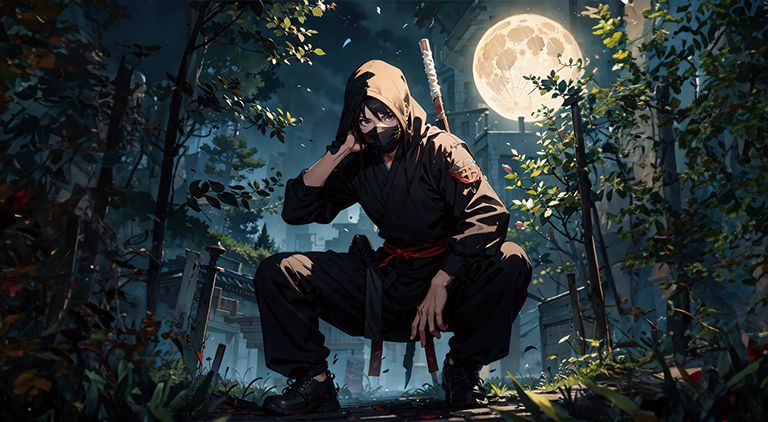Kōga-ryū: The Hidden Art of the Ninja
Kōga-ryū is one of Japan’s most storied schools of ninjutsu, celebrated for its secretive methods and daring exploits. Hailing from the misty highlands of the Kōga region, its practitioners were masters of stealth, espionage, and unconventional warfare. Their skills—and the legends surrounding them—continue to capture the imagination of martial arts aficionados and ninja enthusiasts around the world.
Historical Background
Origins in Feudal Turmoil
Emerging during Japan’s tumultuous feudal era, particularly the Sengoku period, the ninjas of Kōga-ryū carved out a niche in a time when information and surprise were as lethal as any sword. As regional lords sought every advantage in their endless power struggles, the covert operations led by Kōga ninjas became indispensable. Their expertise ranged from reconnaissance and sabotage to orchestrating unexpected strikes that could alter the tide of battle.
The Evolution of a Secretive Art
The training of a Kōga ninja was shrouded in mystery. Instruction was passed down through generations in carefully guarded traditions, with the curriculum evolving to meet the ever-changing demands of warfare. The focus was not solely on physical prowess; mental agility, deep observation, and a profound understanding of the natural environment were all part of the discipline. Over time, Kōga ninjutsu became synonymous with adaptability and cunning, a quality that has ensured its place in both historical records and popular lore.
Distinctive Features and Techniques
Comprehensive Training Regimen
Kōga ninjas trained rigorously in an array of specialized techniques, including:
- Stealth and Infiltration: Learning to move silently and blend with their surroundings, operatives were experts in disguise, enabling them to infiltrate enemy territories without detection.
- Espionage and Intelligence Gathering: The collection of sensitive information was paramount. Kōga ninjas mastered the art of eavesdropping and observation, often living among enemy forces for extended periods.
- Unconventional Warfare: Whether setting traps, employing poisons, or using the natural landscape to their advantage, these ninjas turned even the harshest terrain into a tactical ally.
- Improvised Weaponry: From the iconic shuriken (throwing stars) to concealed blades and other everyday objects repurposed as deadly tools, resourcefulness was key.
Philosophy and Legacy
Beyond their physical prowess, the ninjas of Kōga-ryū embraced a philosophy that valued patience, adaptability, and the art of concealment. They believed that true strength lay in the ability to blend into the shadows—to observe, to wait, and to strike when the moment was right.
In modern times, the legend of Kōga-ryū has transcended its historical origins. Its influence is evident in martial arts, literature, film, and video games, where the enigmatic figure of the ninja continues to inspire. While many of the school’s ancient secrets remain lost to time, the legacy of Kōga-ryū endures as a symbol of the perfect union between strategy, stealth, and the indomitable human spirit.
The Intriguing Relationship with Iga
Historical Rivalry and Mutual Fascination
The Kōga and Iga regions are both celebrated as the cradles of ninjutsu, yet their histories are marked by both rivalry and occasional collaboration. While Iga ninjas, led by figures like the renowned Hattori Hanzō, gained their own legendary status, the two schools often found themselves at odds:
- Rivalry on the Battlefield: In the chaotic landscape of the Sengoku period, lords would sometimes employ rival ninja clans to counteract each other’s spies and saboteurs. This competitive tension pushed both Kōga and Iga practitioners to continually refine their techniques.
- Complementary Skill Sets: Despite their rivalry, there were instances of mutual respect and even cooperation. Both schools shared a commitment to secrecy, stealth, and the art of deception, leading to occasional exchanges of tactical insights.
- Cultural Impact: Over time, the friendly (and sometimes fierce) competition between Iga and Kōga has enriched the lore of the ninja. Their contrasting yet parallel traditions have come to symbolize the multifaceted nature of ninjutsu, inspiring countless works of fiction and art.
Conclusion
Kōga-ryū is more than just a martial tradition—it is a living testament to an era where ingenuity, stealth, and strategic brilliance were the keys to survival. From its rigorous training regimens and innovative combat techniques to its legendary figures like Kōga Jūbei, the legacy of the Kōga ninja endures as a beacon of mystery and mastery. Coupled with the storied rivalry and occasional camaraderie with the Iga clan, the saga of the Kōga ninjas remains an enduring and captivating chapter in the annals of history.
- Ninjas: The Hidden Warriors of Feudal Japan – History, Tactics, and Legacy
- Ninja: Iga-ryū: Unveiling the Secrets of Japan’s Legendary Ninja Tradition
- 27 Ninja Weapons & Tools in the Ultimate Ninja Arsenal: Ninja Equipment
- Ninja Tools and Body Techniques: An Accessible Overview
- Ninja – 忍者:Wikipedia
- Iga-ryū – 伊賀流:Wikipedia
- Kōga-ryū – 甲賀流:Wikipedia


Comments